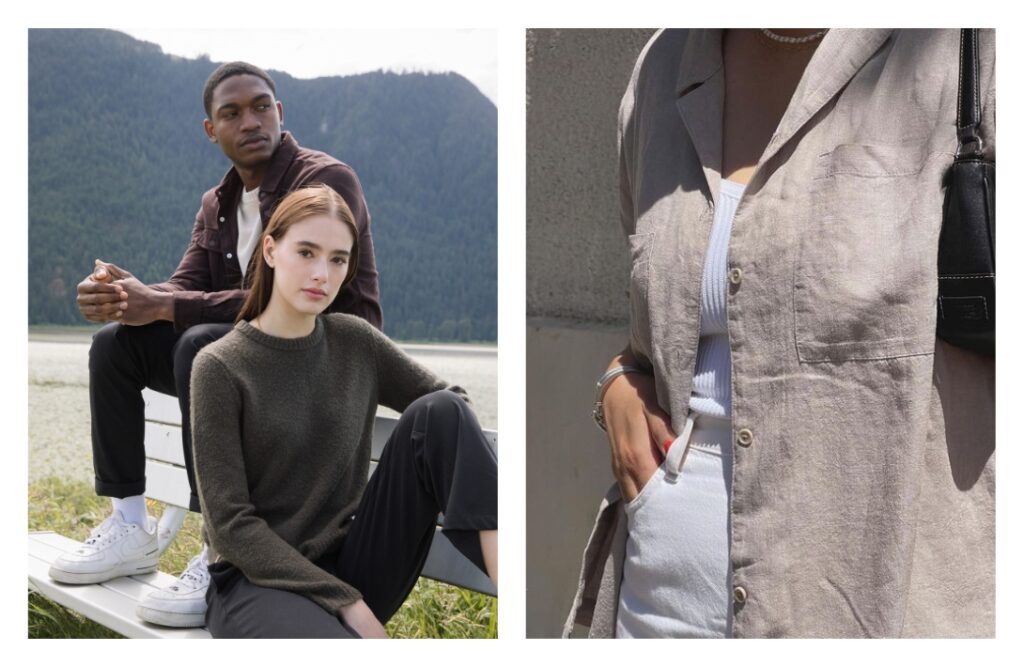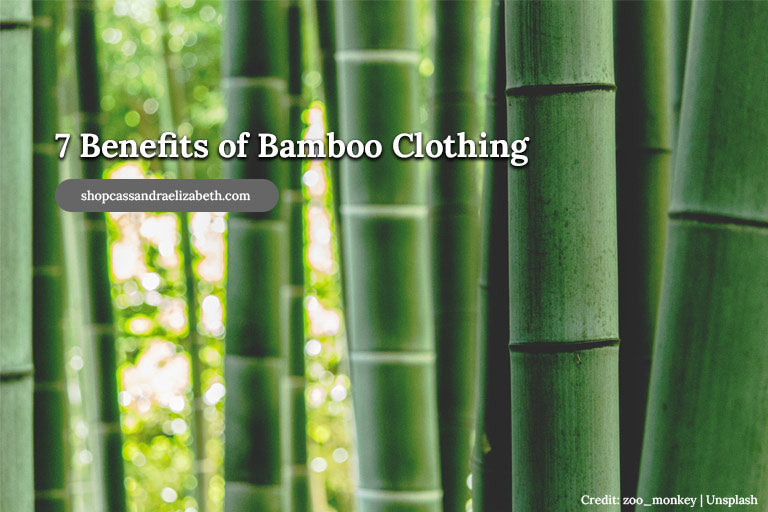Recommended Suggestions On Deciding On Bamboo Clothes
Wiki Article
What Are The Environmental Benefits Of Hemp Clothing That Is Low-Impact?
Low impact fiber hemp clothing has numerous environmental benefits compared to clothing made from other materials, particularly synthetic fibers as well as conventional cotton. Hemp clothing has many environmental advantages. Hemp is fast growing and requires less chemicals, water, and pesticides than many other crops. Hemp thrives in a variety of conditions and soil types. This reduces the use of chemicals used in agriculture.
Hemp is a plant that uses less water than cotton. Cotton is, however is known for its reliance on water. This makes hemp clothing a more efficient option in terms of water.
Hemp can be grown without synthetic pesticides, herbicides or other chemicals. This minimizes the ecological impact of chemical agriculture.
Soil Health- Hemp cultivation can boost soil health because of the deep roots system, which helps prevent compaction and soil erosion. It helps make the soil more fertile to plant in the future.
Hemp can be biodegraded. It breaks down naturally over time, and it reduces the waste of textiles. In contrast to synthetic fibers, such as polyester which can take hundreds or even thousands of years to degrade.
Lower Carbon Footprint - The production of hemp fibers results in generally less carbon footprint than synthetic materials. Additionally, hemp can capture carbon dioxide from the air in its growth and act as an carbon sink.
Hemp clothing can last for many years. Hemp clothing of high-quality can last for many years. They can reduce the need for replacements, and also aid in reducing consumption.
Hemp plants have natural pest resistance that reduces the use of chemicals for pest control.
Hemp is a versatile material that can be made into bags, clothing or accessories.
Regenerative Agriculture. Some sustainable farming practices integrate hemp into the regenerative farming methods that aim to in restoring and improving ecosystems while cultivating crops. This method has positive environmental benefits.
The sustainability of clothing depends on a variety of factors, like the dyeing process, transportation, as well as customer behaviour. In addition, as in any other industry, production standards and practices are subject to change. To ensure that you're getting the maximum environmentally friendly benefit, choose organic or sustainable hemp clothing. Have a look at the top hemp clothing for website tips including hemp hoodie, hemp denim, hemp jeans, hemp jeans mens, hemp yoga pants, hemp polo shirts, patagonia work pants hemp, jungmaven t shirt, patagonia hemp pants, hemp tees wholesale and more.
What's The Secret To Hemp's Moisture-Wicking, Thermoregulating And Breathable Characteristics?
Hemp fibers are water-wicking and breathable. They also possess thermoregulatory characteristics because of their distinctive chemical and structural properties. These properties are due to the following elements. Microstructure- Hemp fibres have a porous, hollow structure that allows air to circulate inside the fibers. The inherent porosity of hemp makes it highly air-tight. When woven, or knitted together, this fabric allows for air flow. It improves air circulation by preventing heat and moisture from accumulating in the skin.
Hemp fibers can be used to absorb water and help wick away moisture. The fibers in hemp clothing absorb sweat, moisture, and eliminate the sensation that your skin is wet. Furthermore, hemp fibers are efficient at wicking away moisture, dispersing it across a wider area of fabric so that it will evaporate faster. In the course of physical activity and in extreme temperatures, this capability to wick away moisture ensures you stay dry and comfortable.
Hemp fibers regulate temperature naturally. In cold weather they will hold heat close to the body to provide warmth. In hot weather, they can help to cool down by the ability of heat and moisture to be able to escape. Because of this inherent thermoregulatory characteristic, hemp clothes can be worn for many different conditions and temperatures.
Hemp fibers have antimicrobial properties, and they can impede the growth of bacteria which cause smells. This is a factor in the freshness and resistance to odor of hemp clothes even when you are physically active.
Hemp fibers can be robust and durable Therefore, hemp clothing will not lose its breathability. This extends the life of hemp clothes, decreasing the need for replacements and, consequently, the impact on the environment.
UV Protection from UV Hemp Fibers offer natural UV protection for skin to protect it from harmful UV radiation. The UV blocker adds hemp clothing's versatility and makes it suitable for outdoor activities.
It is important to remember that these qualities are inherent in hemp fibers, and are not dependent on chemical treatment or other additives. Hemp's natural characteristics create a sustainable and comfortable fabric, specifically for outdoor clothing, activewear and warm-weather clothing. In addition, these attributes remain the same even after hemp fibers are processed into textiles. Take a look at the most popular hemp clothes recommendations for site tips including organic hemp underwear, jungmaven t shirt, hemp apparel fabric, hoodlamb coat, hemp underwear, hemp tank top, hemp clothing for men, hemp boxer shorts, hemp sweatshirt, hemp mens jeans and more.

What are the major differences between bamboo and hemp fibers?
The two fibers from plants, hemp and Bamboo are used in the production of textiles Each has its own characteristics and properties. These are the main differences between bamboo and hemp fibers. Plant Source-
Hemp fibers come from the outer bast fibres in the stalks. Hemp is a multi-faceted and fast-growing plant, has been used throughout the ages in various ways.
Bamboo fibers can be produced from the pulp produced by the bamboo plant. Bamboo is a fast-growing grass species renowned for its rapid renewal and long-term sustainability.
2. Fiber Characteristics
Hemp- Hemp fibers are well-known for their durability and strength. Hemp fibers are among the most durable natural fibers that soften after each wash, making them suitable for durable textiles.
Bamboo fibers are silky and soft. They are not as strong as hemp fibers and can be more delicate, however they are valued for their suppleness against skin.
3. Texture and Feeling-
Hemp- Hemp fabrics have an abrasive, textured feel in their natural state. Although it can be an extremely comfortable fabric, its texture is different from bamboo.
Bamboo The bamboo fabric is soft, silky, and luxuriously soft. The fabric is described as having a silky, cottony feel. It's very comfy.
4. Breathability, Moisture Wicking and Breathability-
Hemp Fibers Hemp fibers absorb moisture and are naturally and breathable. They keep you cool and drier in hot temperatures.
Bamboo fibers also have the ability to wick away humidity and are highly ventilated. They contain micro-gaps, which improve their ability to regulate temperature and humidity. This keeps you comfortably in various environments.
5. Environmental Impact-
Hemp- Hemp fiber is an environmentally-friendly plant because of its water-resistance as well as its rapid growth rate and resistance against pests. This reduces the need for pesticides and herbicides. Hemp can also absorb carbon dioxide from the atmosphere during its growth.
Bamboo is renowned for being ecologically sustainable. It grows rapidly, requires only a small amount of water, and can be grown without synthetic herbicides or pesticides. Certain varieties of bamboo are thought to be extremely sustainable, like Moso bamboo.
6. Processing-
Hemp- Hemp requires extensive processing in order to separate its outer bast fibers (outer woody core) from the woody inner fibers. Processing can include retting and decortication, as well as mechanical separation.
Bamboo- Bamboo Fibers are produced through a chemical process known as the viscose/rayon method. This involves breaking down the bamboo pulp with chemicals. If not properly controlled this process can be harmful to the ecosystem. However some bamboo fabrics use closed loop systems to reduce production waste.
7. Versatility-
Hemp- Hemp fibres can be used for a range of purposes, such as clothing, textiles, and paper. They also make excellent construction materials.
Bamboo Fibers- Bamboo fibers have been used for clothing, textiles and many other items.
Bamboo and hemp are distinctive and possess sustainability advantages. The decision between them is based on the specific characteristics and features you are looking for in a textile product and your environmental preferences. Take a look at the recommended bamboo clothing advice for website recommendations including bamboo fibre clothing, bamboo trousers mens, bamboo t shirts ladies, bamboo yoga pants, kate quinn bamboo, bamboo jeans, bamboo yoga pants, men bamboo boxer shorts, ladies bamboo tops, halloween bamboo pajamas and more.
